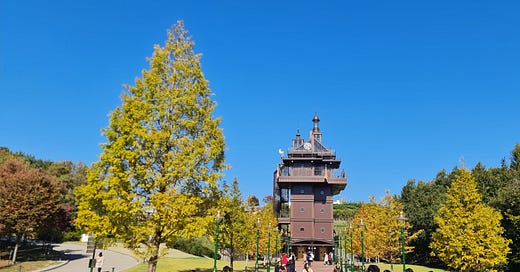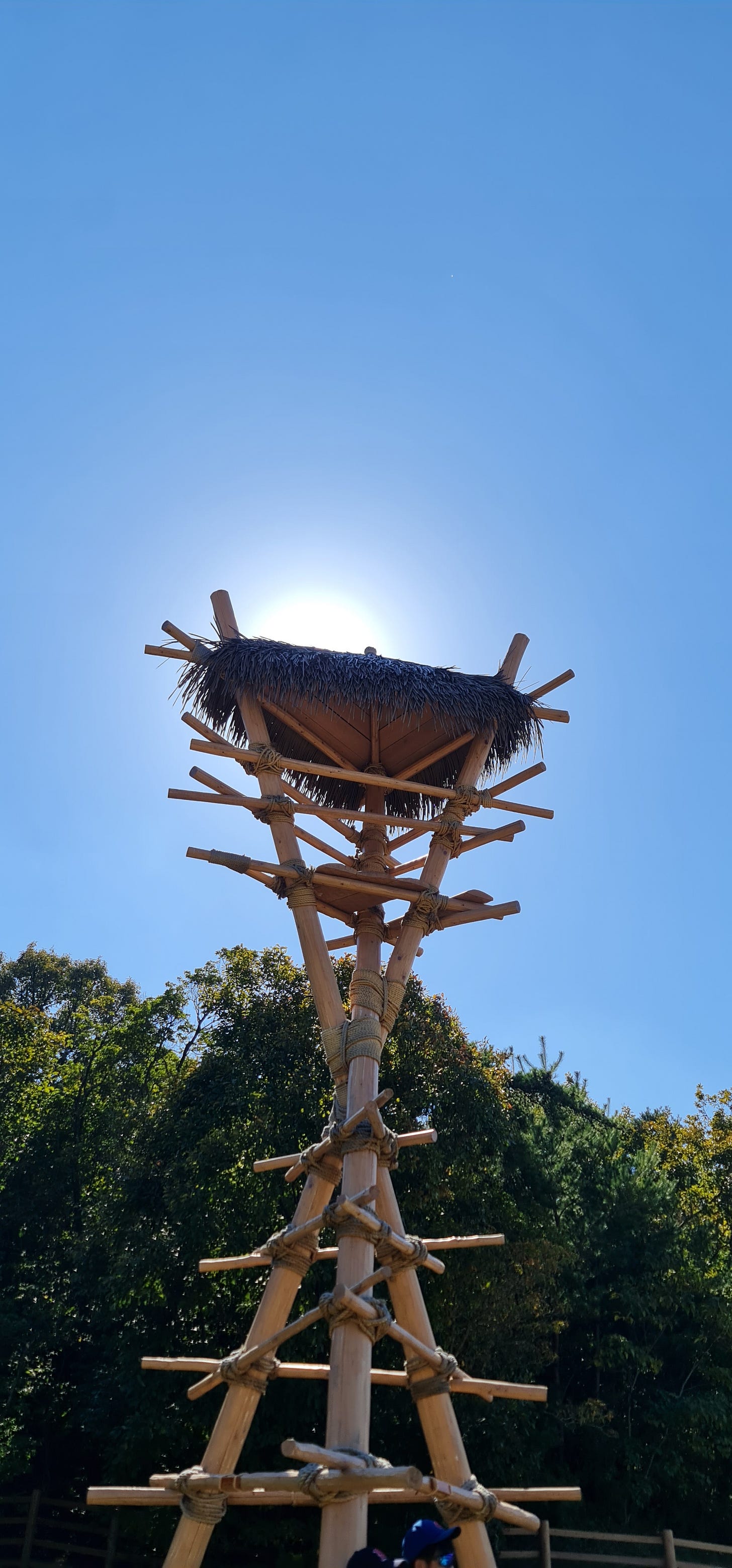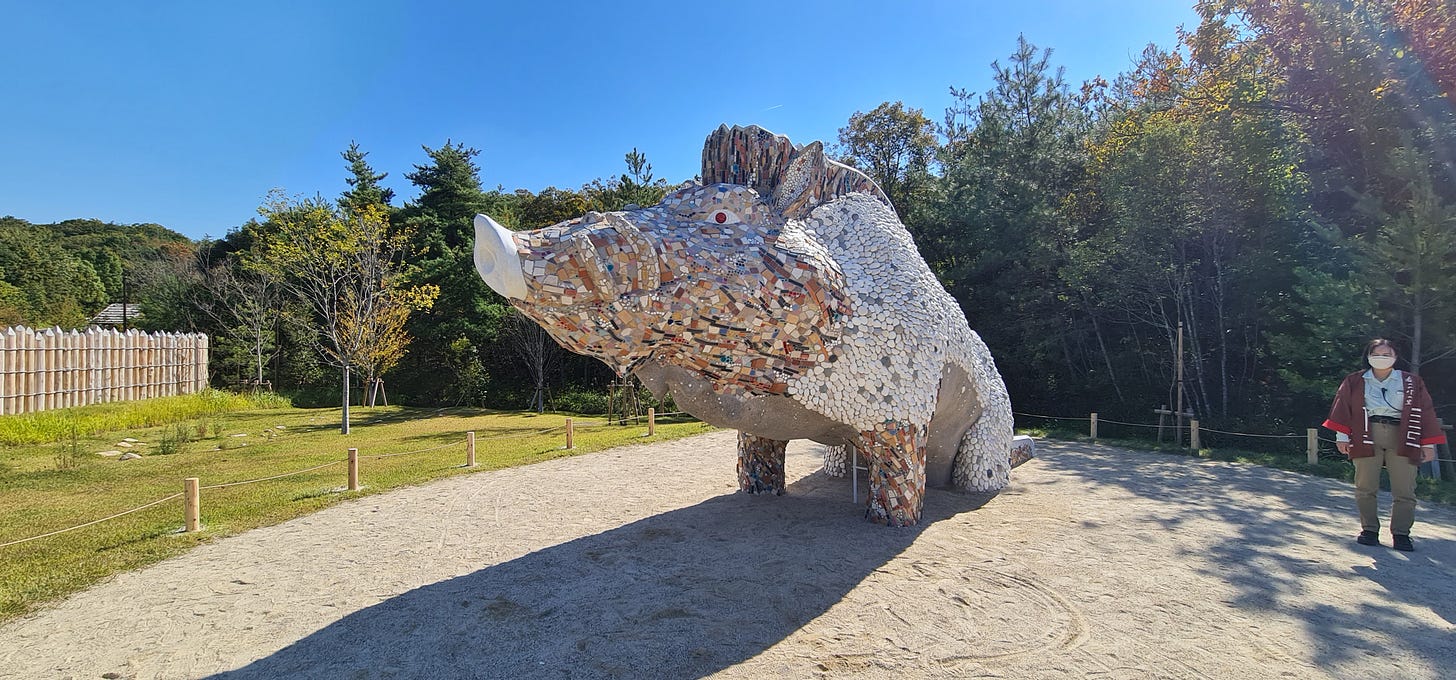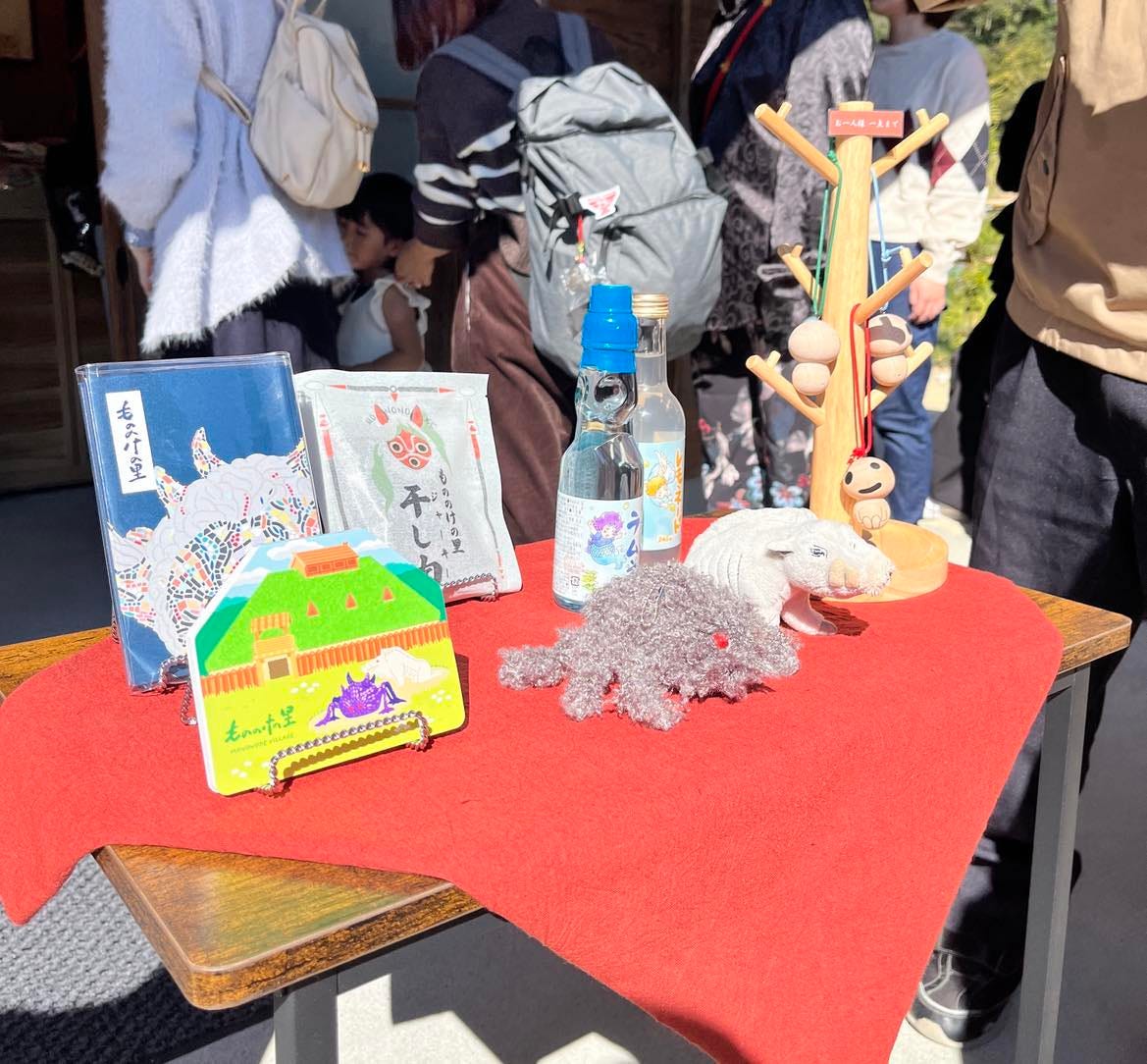Over time, you learn to filter away the eye catching events to those that are actually of interest to you. That becomes its own problem. For when there is something that you are excited to attend, so too is the rest of the country. You start noticing the train advertisements plastered along the tops of every carriage. The SNS (social media) feed becomes a single entity that is urging you to attend on opening day.
Normally we can resist this temptation, knowing that crowds and I share different interests. It was Ghibli Park that broke us. Not even the normal park which we had managed to tie ourselves to the mast and not attend for a whole year. It was the opening of the recreated Mononoke Village.
“We have to go.”
Buying the tickets
We looked online to find a free weekend. Sold out indefinitely. Chastened, we thought not to try competing with the Japanese public on matters relating to Ghibli again. Yet looking again it seemed there was one free day during the opening month. Even more curious, it was the opening day, November 1st 2023.
Was this a prank? How was the opening day still, well, open? Maybe it was a trial date or reserved for special dignitaries.
Regardless, we pounced on the tickets first, and checked with our work afterwards on taking a random Wednesday off. We were off to explore the forest with all of Ghibli’s wonders! Like everything in Japan, the ticketing process was not straightforward at all and on reflection I have many thoughts on the Japanese culture of ticketing. But first, I want to share what attending Ghibli Park was like and what to expect.
Ghibli Park Start
I won’t retell the origin story of Studio Ghibli in this post, and instead focus on Ghibli Park. For anyone unfamiliar, the super condensed and possibly offensive summary of this cultural icon is that Studio Ghibli is like the Disney Studios of Japan, making classic animated movies that have endured for generations.
Given this significance to a large section of Japanese (and Japanese-curious abroad) society, the announcement of Ghibli Park, a theme park dedicated to the various animated works, was met with great fanfare. The opening itself faced several challenges, with events such as a pandemic delaying the opening and keeping the national borders only slightly ajar when the Park finally opened in November 2022.
Entry into Magic
Nonetheless, the park has managed a very healthy attendance record since its debut. This was very evident when we arrived. Arrival was simple enough using Nagoya’s public train system. Zoom out to throngs of Ghibli fans packed onto the Limino Maglev line, with many dressed not so discretely in Ghibli garb as though Halloween never ended.
The Ghibli Park repurposes/ repackages an existing giant park built for the Nagoya World Expo of 2005. Even the gate was subtly adjusted to include this new addition to the park. While the walk towards the Park had streams of dedicated fans, the ticket cap meant the entrance was relatively quiet.
No tickets at the gates or people checking at the mouth of the park. As various sections of the park were ticketed off separately, it meant the flow of travelers moved freely until the specific attraction barriers. For us, we would visit the Ghibli Grand Warehouse and the opening act of Mononoke Village.
The Opening of Mononoke Village
Our plan was to beeline towards Mononoke Village which could have been difficult to identify as it was not yet on any of the park maps. This wasn’t a worry though, as all the park patrons seemed to have the same idea and made the direction clear to see.
Even though news crews from around Japan huddled around the entrance, with several helicopters circling, there were no queues facing our entry to the highly anticipated ticketed area. While I could describe the place further, I’ll let some pictures do the talking.
Lookout post pre-boar god
Structures here were beautifully constructed, with a particular favourite being the statues of the cursed animal gods (one doubling as a slide), yet the description of this place being Mononoke Village surprised us.
What exactly is encompassed when the word village is used?
In my mind it means a community that centres on residences and commercial entities. What I didn’t picture was one restaurant and one merchandise store with a few statues. The restaurant was the centerpiece attraction with a gorgeously thatched roof and a chance (for a price) to make your own large-scale dango. This had a giant queue, but paled compared to the queue for the Mononoke Village shop.
Somehow, despite us arriving when the location just opened, the queue for the shop was immense. And unmoving. Out of morbid curiosity we too joined the line briefly, at least to find out what sales items were there. Below is the entire shop’s catalogue. Given the countless other opportunities to buy Ghibli gear, we did not stay in line.
While I wouldn’t say the village was not a fun experience, I would not go out of my way if this was the only attraction of Ghibli Park. As we walked from Mononoke to the other open air parts of Ghibli Park, we were left pondering a question.
Understated or lazy?
While we had gone directly to Mononoke Village, we had just imagined that the only thing between us and total immersion in the magic of Studio Ghibli was the entrance elevator.
Not quite the case.
We saw large expanses of space that showcased the beautiful interplay of nature and recognisable Ghibli buildings. Yet it was the expanses that left us puzzled. Much of the park didn’t seem like it had been adapted at all to be an actual “theme”, rather just a park.
The park was perfectly manicured with gorgeous flowers and apparently healthy wildlife. Yet the Ghibli aspect of it seemed oddly missing for swathes of the park, especially the parts that were meant to be Ghibli-themed. Perhaps we were asking too much, but there seemed to be details that could have been tilted slightly for a more encompassing feeling like adding tiny kodamas or Yakul within Mononoke Village. There were also a lot of staff on hand to guide visitors and organise queues; could it have hurt for just one of them to put on a giant Totoro costume?
What struck us was trying to understand the intent behind the design. Was the understated design intentional, to be in keeping with the classic Ghibli play of letting nature speak for itself? Or did they design it to be as easy to manage as possible? There were no moving parts, no rides, and no elaborate theming. Some may claim the “Disney-fied” model is garish and over the top, and Ghibli is merely reflecting their clean aesthetic of the classic movies.
If this was truly the case, then the park has a funny way of “speaking truth to their message”. Barefaced capitalism raises its head non-exclusively at Mononoke Village with massive queues for limited edition merchandise, while the whole park showcases extensive product tie-ins which could also run counter to the Ghibli aesthetic.
This is not meant to be a damning indictment of how the Park is run. Each employee at the themed building were dressed immaculately in Ghibli-esque uniforms distinct to each area, and the design of the structures were immaculate. Really it was the little things that linked each section to another that seemed more Nagoya World Expo than Studio Ghibli.
Grand Warehouse
Having walked through the other open-air parts of Ghibli Park, there was only the Grand Warehouse left. With such a name we had high expectations. The ticket even specified a specific time of entry, suggesting that this might be the attraction showstopper.
The Grand Warehouse delivered on this promise. The exterior was unremarkable, but hid treasures that kept us entertained til close. Again, I will share some images before discussing our own highlights.
Unlike the open world aspect of Ghibli Park, no detail seemed to be spared within the confines of the warehouse. Famous and not-so-famous scenes were recreated within the space, and so too were worlds and experiences.
Among our favourite parts included the gorgeous cinema below. Exclusive short movies played and we were lucky enough to see a Totoro follow-up focused on a baby Cat Bus. This was a perfect escape into a carefree childhood from an already perfect escape into a carefree childlike theme park. We loved seeing such beloved characters in a mini sequel that I’ve been informed is only available at Ghibli Park or Museum.
There were also incredible exhibits from the making of the films displayed in a special you-can’t-take-photos exhibit. For us it highlighted the one part of Ghibli movies we all want, the food.
It recreated the depicted food into the familiar plastic sample food displays for each movie, even making replica kitchens of films like Laputa and My Neighbour Totoro. Beyond that, it showed the still drawings that were used to animate these movies, allowing us the rare insight into the process of filmmaking. We were completely levelled by the detail needed to build the intricate worlds of Ghibli, with multiple frames dedicated to hand drawn bubbles within the corner of the frame of Howl’s stovetop meal. From showcasing the physics of how an egg breaks, to the elaborate royal banquets, this special exhibition made us all wish that Ghibli animators were equally good chefs.
Even having not seen many of the movies depicted in the warehouse, I was won over. The recreation of Arriety’s world, a tiny being who lives using giant human tools was nothing short of breathtaking. Each detail of making mega-sized versions of everyday objects to be repurposed for tiny living like using a set of staples as a wall ladder. It made me want to stop and watch the catalogue to try and notice each intricate detail they chose to include.
The Grand Warehouse fulfilled that film-lover’s dream of seeing movies being brought to life. In that regard, Ghibli Park is a must visit.
Lessons learnt
If I had to characterise lessons learnt from this experience it would be the following.
This is not a park that I'd suggest to visit if you haven’t seen or do not enjoy Studio Ghibli. In this way it diverges from traditional theme parks with a much wider appeal. However, for anyone with the not-so-niche interest in these movies, this was a perfect blend.
People are very willing to buy anything related to this brand.
I still hate Japanese ticketing systems. There were countless issues from needing to reset the randomly generated password to everyone (even Japanese nationals) needing to bring a passport for entrance. My opinion: Do better.
The collective love of Studio Ghibli is greater than I can imagine, and in all honesty Ghibli Park was able to deliver the nostalgia and magic of its much beloved films.














Wow! The park looks amazing!
How cool. My partner would absolutely love that place.
From why not (?) to why not (!) and then you discover that there is this Arabic ice cream which has a difference from the Italian version and start to thinking about your own language from initially reading the recipe of the food called “Sorbet”😱🧯